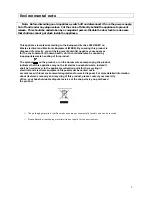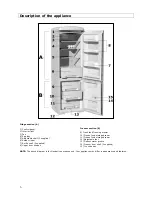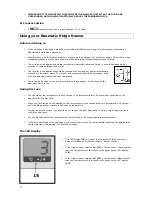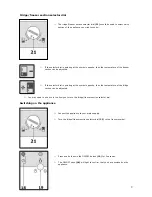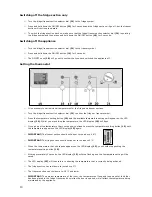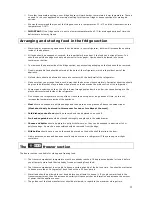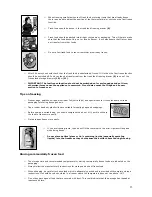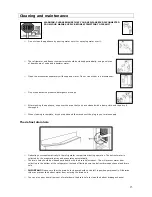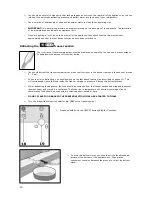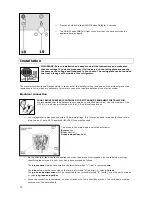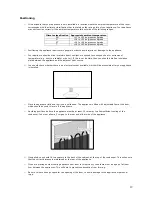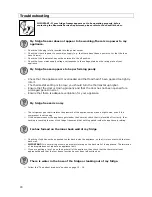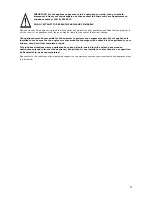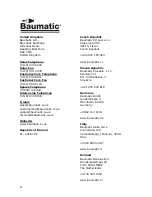
o
On colder temperature settings, your fridge freezer will work harder to maintain a lower temperature. There is
no need to run your appliance on maximum setting for either the fridge or freezer sections for prolonged
periods.
o
We would recommend that you set the fridge section to a temperature of 3 - 4°C and the freezer section to a
temperature of -18°C.
o
IMPORTANT: If the fridge section is set to a lower temperature than 5°C for prolonged periods of time, the
defrost drain hole may freeze.
Arranging and storing food in the fridge section
o
Warm food or evaporating liquids should not be stored in your refrigerator, as this will increase the humidity
inside of the appliance.
o
All foods should be wrapped or covered, this is particularly important if the food has a strong flavour. You
should use polythene bags or sheets, aluminium foil, wax paper. Liquids should be stored in covered
containers or bottles.
o
To maximise the space inside of the fridge section, any excessive packaging on the food should be removed.
o
Quickly perishable food should be stored at the back of the refrigerator, which is the coldest part of the
appliance.
o
No food items should be allowed to come into contact with the back wall of the refrigerator.
o
Make sure that you arrange food in such a way that the door can close completely. Particular attention should
be given to bottles that may protrude when placed on shelves inside the main section of the refrigerator.
o
Some organic solutions, such as the oils in lemon/orange peel and acid in butter, can cause damage to the
plastic parts contained inside of the refrigerator.
o
Do not open the refrigerator door too often or leave the door open for long periods of time, as this will
increase the temperature inside of the appliance.
o
Meat should be wrapped in polythene bags and then placed on the glass shelf above the salad crisper.
(Meat should only be stored in this manner for one or two days at the most).
o
Cold dishes/cooked food should be covered and can be placed on any shelf.
o
Fruit and vegetables should be cleaned thoroughly and placed in the salad drawer.
o
Cheese and butter should be placed in airtight containers, or they can be wrapped in aluminium foil or
polythene bags. As much air as possible should be removed from the bags.
o
Milk bottles should have a cap on them and be stored on the bottle shelf that sits in the door.
o
Garlic, potatoes, onions and bananas should only be stored in a refrigerator IF they are kept in airtight
containers.
The
freezer section
The freezer section is suitable for storing and freezing food.
o
The freezer compartment temperature must have already reached -18 degrees centigrade (or lower) before
you attempt to store food that is already frozen or freezing fresh food.
o
The freezer compartment is only able to freeze a certain quantity of food at one time. You should not attempt
to freeze more than 10 kilograms of fresh food within a 24 hour period.
o
Warm food should be allowed to cool down before you attempt to freeze it. If you place warm food in the
freezer compartment, then the increased humidity will cause quicker ice formation and increase the amount
of power that the appliance uses.
o
The guidance of the food manufacturer should be followed, in regard to the maximum storage time.
11
Summary of Contents for RETRO14BL
Page 23: ...23...



